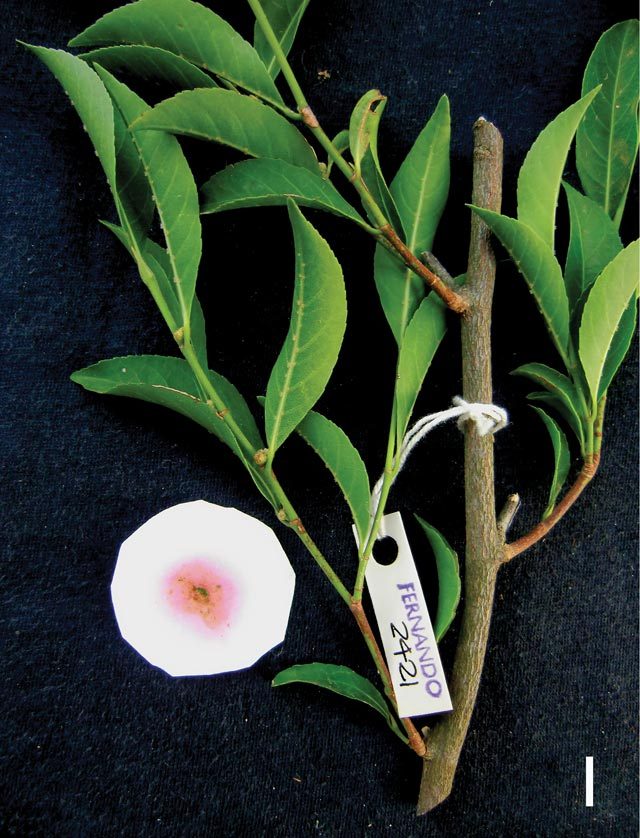SUMMARY
This is AI generated summarization, which may have errors. For context, always refer to the full article.

One hot summer day in 2011 Dr Edwino Fernando of the University of the Philippines Los Baños (UPLB), together with his research team found the Rinorea niccolifera, a nickel-eating shrub, in Zambales, a province about 3-4 hours away from Manila.
“I have always been interested in the type of habitat where this newly discovered plant occurs,” said Fernando.
R. niccolifera was found in the most unforgiving of all habitats for plants – in rocks and soils rich in toxic heavy metals.
Dr Augustine Doronila of the University of Melbourne in Australia, one of the Fernando’s co-authors, said, “These usually are very poor in essential mineral nutrients. They have a strong tendency to be prone to drought.”
“There are plants that thrive here normally; they are referred to as ‘metallophytes,” he said.
But the newly discovered plant is unlike anything that has been described before, even in its own category of “hyperaccumulator,” plants that absorb toxins like heavy metals in higher concentrations, the scientists said.
“They are unique compared to other metallophytes in that they are able to accumulate and tolerate metal elements at levels 100 times greater than those typically measured in leaves of the common non-accumulator plants growing in the same environment,” Fernando said.
While there have been few studies showing how the plants develop this trait, Doronila cited two hypotheses that might explain this extraordinary adaptation.
The first is the idea that hyperaccumulation allows the plants to grow in heavily metal-contaminated soil. While most plants exclude the metal from entering their shoots and leaves, hyperaccumulators like R. niccolifera have evolved the trait and load their tissues with excess nickel.
The other hypothesis, Doronila said, is that there is a reproductive benefit to a nickel-eating plant.
“The metal in the plant tissue can function as a toxin that deters animals from eating it. There is good evidence to show that this may allow the plants to survive on these hostile soils and reproduce and produce seeds and seedlings for the next generation,” he said.
Only about 450 species of nickel-eating plant are known all over the world.
Doronila said that 5% of the Philippines’ land area are soils rich in heavy metals and these areas may likely support and host nickel-accumulating plants like New Caledonia, with 65 species, and Cuba with 145.*
“We have already discovered more than 20 new hyperaccumulator species in the Philippines with some that are also new to science such as the Rinorea niccolifera (an extreme hyperaccumulator) and are currently being described systematically by Professor Fernando,” Doronila said.
The plant highlights the richness of Philippine biodiversity, said Fernando.
“The fact that this new species is also a hyperaccumulator plant makes it doubly significant. Hyperaccumulators are very interesting plants to study for their unique ecology and physiology,” he said.
Fernando and Doronila and their colleague, Marilyn Quimado of the University of the Philippines Los Baños, published their finding in Phytokeys, an international scientific journal on biodiversity.
Speaking about nickel hyperaccumulators in the Philippines, Doronila said, “As you can see we will easily become the 3rd major world biodiversity hotspot of these unique species.”
But more than biodiversity, R. niccolifera opens the door to exploring green technologies.
Dr Teresita Perez of the Ateneo de Manila University, who is not part of the study, said that since the country has a long history of mining, the discovery is very valuable.
Metal plant hyperaccumulators are important discoveries in the country since these plants can help clean up mine areas, she said.
At both small- and large-scale mines, metals can remain in the soil for years which can have health and environment impacts, so such plants could be useful, said Perez.
Earlier this year, Perez, Doronila and other colleagues also published a study in Asia Life Sciences, an international peer-reviewed journal, on the discovery of another potential nickel hyperaccumulator, the Breynia cernua, a species of a tropical bush found also in Australia and India. The plant was also found in Zambales.
Perez said the discovery of hyperaccumulators is valuable, particularly to two types of green technologies: phytoremediation and phytomining.
Phytoremediation refers to using plants to detoxify metal-contaminated environments, especially soil, while phytomining is like metal farming, where metals are removed from plants in mineralized sites.
“These are environment-friendly technologies, using local materials and not utilizing chemicals or expensive imported technologies,” Perez said.
“The use of plants in mined area can also prevent soil erosion and facilitate the succession of other plants and animals in such areas,” she said.
The Department of Science and Technology has already created a Phytotechnologies Program where they use phytoremediation as the main tool to clean up metal contaminated soil in mining areas, said Perez. – Rappler.com
*Editor’s note: In a previous version of this story, the writer listed 45 species for Cuba. She was later told by Mr Doronila that his recollection was wrong and that Cuba had 145 and not 45 species. We have made the necessary change.
Add a comment
How does this make you feel?
There are no comments yet. Add your comment to start the conversation.